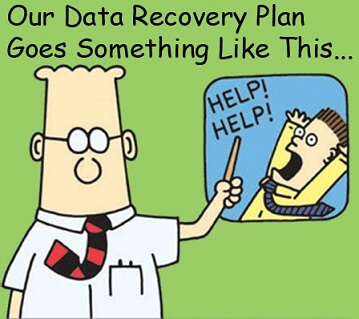Most people reading this would have at some point in time experienced data loss. The reasons are varied; hard drive failure, accidental deletion, viruses, theft and loss of the physical medium. Backup systems at home are still uncommon, even though most of us hold ‘important’ data somewhere at home. When data loss occurs, you’re generally in one of two circumstances;
- The data is technically reproducible through the expenditure of time and or money. It may be low value data that is duplicated elsewhere that can be re-acquired (music collection). Or it may be unique data that is time intensive to reproduce (that 15 page document).
- Data that is simply irreproducible. The most common example being personal photos.
In reality a lot of what would technically fall into the first category, ends up being in the second one. In many circumstances the data loss is so large that the time/money factor in reproducing the data makes it economically irreproducible, at least in its entirety.
Impact on Business
While losing personal photos can cause some anguish, the impact of data loss to businesses is much more severe. There are some statistics out there, such as these ones, though the source of these numbers is sometimes questionable.
However the risk can be understood with a simple but rather common scenario. Imagine you’re working on a tender proposal for a client, bidding for a project against several competitors. Suddenly without warning, a hard drive fails. This hard drive contained the only copy of a spreadsheet which has all of your financials and costings. It’s possible to reproduce the spreadsheet, but it would take weeks and the deadline for the tender is in days. The outcome is obvious.
It’s not hard to take this simple scenario and think of the huge number of variations that can occur and affect your business. The outcome could be loss of potential revenue, actual incurred costs or even legal non-compliance.
“There are two kinds of people in the world – those who have had a hard drive failure, and those who will.” – Peter Krogh
3-2-1 Rule
The de facto standard for backups in the IT industry is the 3-2-1 rule. The rule basically means;
- There should be 3 copies of all important data.
- They should be stored on 2 different mediums of storage.
- With 1 copy being offsite.
The third rule seems to be the one that a lot of businesses struggle with most. Some even consider it unnecessary. To understand the value of an off-site backup, it helps to reframe it as insurance. Just as you would insure assets of high value against disaster, you should insure your valuable data against disaster.
While the probability of a fire, theft/malicious intent, or any other disaster is relatively low, the outcome without insurance is catastrophic. Most understand that the loss of high value assets without insurance could end in bankruptcy. What would happen if you lost all of your business data? An off-site backup is insurance against disaster.
Fun fact: the 3-2-1 rule is attributed to the photographer, Peter Krogh.
Advantages of cloud backup
With the progression of cloud computing, one area that has experienced large growth is cloud storage/backup. The advantages of cloud backup are many, here are a few:
- It’s cheap; if you have a third party company that picks up and drops off your tape drives, it’s almost certain that a cloud backup would be cheaper. The yearly cost of cloud backups is now so low that any business can afford it. Better yet, prices are still going down.
- It’s automated; today a lot of businesses still rely on tape backups (or external hard drives) that have to be physically taken off-site, typically at the end of the day by an employee. This process is not only tedious and time consuming, it’s almost always poorly implemented and untested. Cloud backups are completely automated and require no end user interaction.
- It’s secure; with the right vendor and the right security protocols, cloud backups can be very secure. With threats like ransomware and disgruntled ex-employees, physical and electronic security is extremely important. Cloud backups have all of these bases covered.
- It’s durable; cloud backup systems in themselves have several levels of redundancy (even geo redundancy if you need it). Your data in the cloud is itself subject to some form of 3-2-1 or similar backup framework. This is in contrast to say tapes, which is a single medium and is subject to various environmental hazards when in transit.
Disadvantages of cloud backup
The biggest disadvantage to cloud backups is that the RTO (recovery time objective) can be longer than some other off-site backup methods. Basically this is the time it takes to get your data restored from a backup. This is particularly true when the data-set is very large and the bandwidth available is limited. However with the right setup, this can be easily mitigated and or completely overcome. In fact there are some solutions available today that completely resolve this, however at some extra expense.
If you’re tired of transporting tapes every day, think your backup solution needs review or an improvement, contact us for a free consultation.



